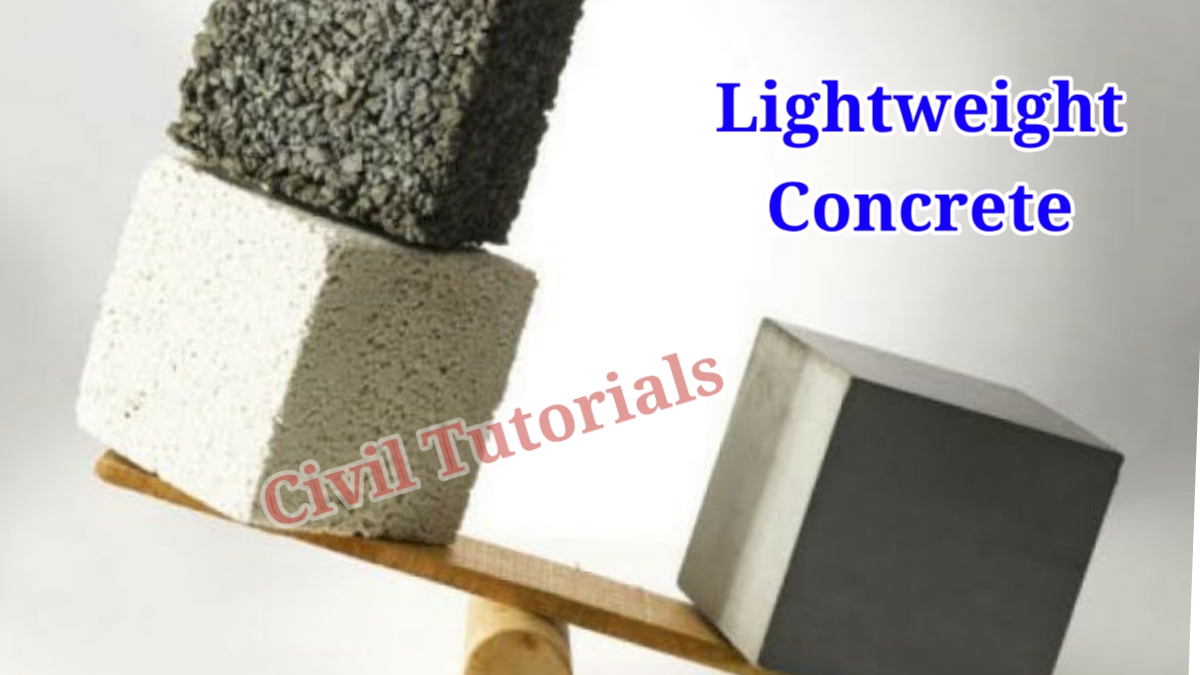What is Lightweight Concrete
You can easily understand according to its name this is light in weight and density. Its a type of concrete which contain expanding agent that increase the volume of mixture and reduce dead weight. Its concrete weight is light, with compare to normal concrete or conventional concrete. Lightweight concrete maintains its large voids which are help to reduce density of concrete and thermal conductivity.
It is lighter than normal concrete with dry density of 300kg/m3 up to 1840kg/m3, it may lighter 86 to 23% of normal concrete.
Type of lightweight concrete
Lightweight concrete prepared by injecting air in composition or it achieve the finer sizes of the aggregate or even replace it by a hollow or porous aggregate. Normally, lightweight concrete can be classified in to three categories.
- Aerated Concrete (Foamed Concrete)
- Lightweight aggregate concrete
- No-fines concrete
Aerated Concrete
Coarse aggregate is not use to make aerated concrete, it is made by introducing air into a cement slurry and fine aggregate.
Lightweight aggregate concrete
Normally lightweight concrete made by natural aggregates like pumice, scoria and volcanic origin or artificial such as expanded blast-furnace slag.
No-Fine Concrete
It the combination of lightweight concrete composed of cement and fine aggregate.
Advantages of lightweight concrete
Rapid and easy to construction. Economical due to light in weight it reduces cost of manpower. Lightweight concrete has better nailing properties with compare to normal concrete. It has better sawing properties than heavier and stronger normal concrete. Reduce dead load of structure, and cost of project also. Improved thermal properties and fire resistance. Save transportation cost also.
Disadvantage of lightweight concrete
It is very sensitive with water content in mixture. Difficult to finish its surface due to porosity and hollow structure of aggregates. Lightweight concrete requires more time to assure proper mixing with compare to conventional or normal concrete.

I live in a condominium apartment building that’s 3 floors over a garage.
I just learned that under our carpet or linoleum/vinyl flooring OVER PLYWOOD PLUS 6 INCHES OF LIGHTWEIGHT CONCRETE. Our ceiling-floor total space is “between 23 and 18 inches” height . Are there limits to how much weight can be supported by that little concrete? Note: This building was begun before the Northridge earthquake but taken down to garage level and redone during 1995.